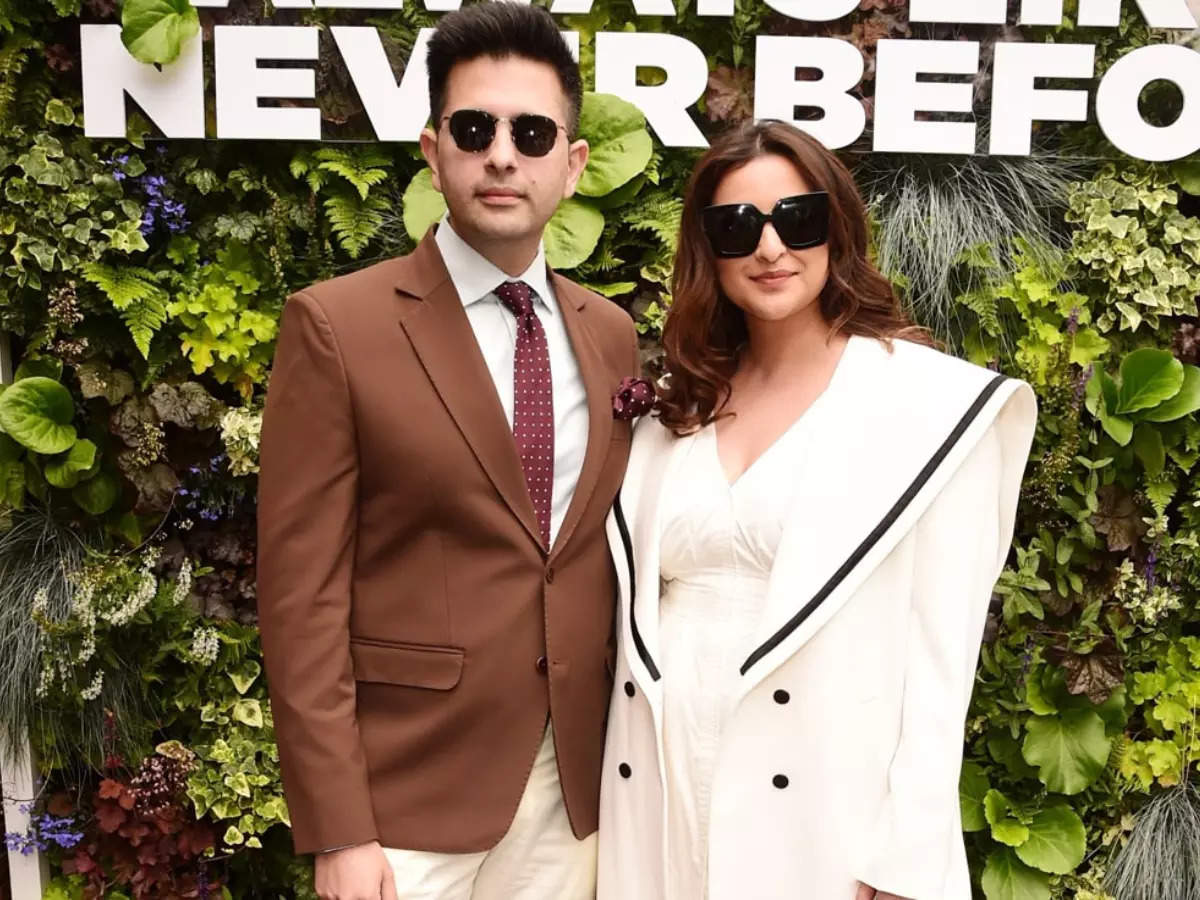Once upon a time, there was a princess in Denmark who aspired to become an artist.
Though she was the eldest child of the country’s reigning king, for the first 12 years of the princess’s life, only men had the right to inherit the throne. That changed when the Danish constitution was amended in 1953, and the princess became her father’s presumptive heir soon after turning 13. She continued to pursue her interest in art throughout her teenage years, producing drawings by the stacks before largely stopping in her 20s.
Around the time the princess turned 30 — and after she had earned a diploma in prehistoric archaeology at the University of Cambridge, and had studied at Aarhus University in Denmark, the Sorbonne and the London School of Economics — she read J.R.R. Tolkien’s “The Lord of the Rings.” It inspired her to start drawing again.
Not long after, upon her father’s death in 1972, the princess was crowned as queen: Queen Margrethe II of Denmark, to be specific.
Margrethe, now 83, celebrated 50 years on the throne in 2022. But in assuming the role of queen, she did not abandon her artistic passions. As a monarch she has taken lessons in certain media, has taught herself others and has been asked to bring her eye to projects produced by the Royal Danish Ballet and by Tivoli, one of the world’s oldest amusement parks, in Copenhagen.
Her paintings have been shown at museums, including in a recent exhibition at the Musée Henri-Martin in Cahors, France. And her illustrations have been adapted into artwork for a Danish translation of “The Lord of the Rings.” (They were published under the pseudonym Ingahild Grathmer, and the book’s publisher approached her about using them after she sent copies to Tolkien as fan mail in 1970.)
Margrethe recently notched another creative accomplishment: serving as the costume and production designer for “Ehrengard: The Art of Seduction,” a feature film that debuted on Netflix in September and has wardrobes and sets based on her drawings and other artworks.
The film is an adaptation of the fairy tale “Ehrengard” by Karen Blixen, a Danish baroness who published under the pen name Isak Dinesen. Set in a fictional kingdom, the story is loosely about a woman named Ehrengard who becomes a lady-in-waiting and foils a royal court painter’s plot to woo her.
“It was great fun,” Margrethe said of working on the film in an interview in August at the Château de Cayx, the Danish royal family’s estate in Luzech, a village near Cahors in the South of France.
“I hope that Blixenites will accept the way we’ve done it,” she said.
Conjuring Atmospheres
The Netflix adaptation, a sort of fantasy dramedy produced by the company SF Studios, has been more than a decade in the making.
JJ Film, a Danish production company also behind it, approached Margrethe about working on the movie after she served as production designer for two shorter films it produced, “The Snow Queen” and “The Wild Swans,” which were both adapted from Hans Christian Andersen fairy tales. Those films, released on Danish television in 2000 and 2009, also featured sets based on artworks by Margrethe, who in 2010 became an honorary member of the Danish Designers for Stage and Screen union.
For the Netflix film, the queen designed 51 costumes and made 81 decoupages — a type of cut-and-paste artwork — that were used as the basis for sets. (She was not paid by the production companies.) Her sketches, along with some of the clothes and many of the decoupages, are being shown at the Karen Blixen Museum just outside Copenhagen through next April. Afterward, there are plans to show them in New York, Washington and Seattle.
To compose the decoupages, the queen cut up images of various landscapes and interiors and pasted the pieces together to create new scenes, like a sumptuous sitting room and a rocky canyon with a fortress and a waterfall.
“Sometimes it takes hours, and sometimes things want to come together and they do as you want them to do, and suddenly you’ve done a whole decoupage in an afternoon,” she said. “It’s kind of a puzzle.”
She was guided by Blixen’s “very visual writing,” she said, noting that Blixen, as well as Tolkien and Andersen, were writers who also painted or drew.
Bille August, 74, the film’s director, described the queen’s decoupages as a “tuning fork” that he used to build “a world that is detached from reality without being a full-on fairy tale.” (He compared the general visual style he sought to the tone of Baz Luhrmann’s “Moulin Rouge!”)
“Conjuring that special atmosphere is perhaps the queen’s greatest achievement here,” Mr. August said.
Scouts would seek locations that reflected the decoupages, which set designers would then style with props to further emulate the artworks. Elements in the decoupages that couldn’t be found were rendered using computer-generated imagery. Some decoupages were scanned and details from the artworks were added to scenes in postproduction.
Blixen did not set “Ehrengard” in a specific time, giving Margrethe freedom to interpret the look of the costumes. She chose to base her designs on clothes from the Biedermeier period in Austria and other parts of central and northern Europe, which took place from 1815 to 1848.
Anne-Dorthe Eskildsen, 56, the film’s costume supervisor, said she generally translated Margrethe’s sketches “one to one” when fabricating the garments, which were made with textiles and trimmings that the queen helped select.
Margrethe said that for one costume she had sketched — a dress in hunter green with pink paisley-like specks — she had hoped to find a sprigged fabric. “But we couldn’t find one,” she said, so the pattern was custom printed. Another costume designed for the film’s grand duchess character was inspired by a portrait of a French queen.
“She was wearing a lovely get-up,” Margrethe said. “It seemed to me exactly what the grand duchess should be wearing.”
Certain elements of the costumes, like leg-of-mutton sleeves, reflected fashion at the time of the Biedermeier period. “I quite like that style,” Margrethe said. “I’ve been interested in style and in the history of style and costume for a very long time.”
Other details were less historically accurate: Some dresses had waistlines that were slightly lower than those typical of that era, to give them a more flattering fit.
Mikkel Boe Folsgaard, 39, the actor who played the court painter, Cazotte, said that when Margrethe saw an early version of his costume, she thought it lacked color. “And she was clear about exactly which colors she wanted to see,” he added.
The actress Alice Bier Zanden, 28, who played the title role of Ehrengard in the film, said that at a costume fitting attended by Margrethe, the queen’s enthusiasm was palpable. “You’re just smitten by it,” she said.
Sidse Babett Knudsen, 54, who played the grand duchess, described the queen’s presence at the fitting this way: “bare legs, beautiful shoes, nice jewelry — smoking away.” (Margrethe has made no secret of her fondness for cigarettes.)
Ms. Knudsen added that she felt comfortable “clowning around” in front of Margrethe, who has generally been popular in Denmark. According to a 2021 poll by YouGov Denmark, she was the most admired woman in the country (the most admired man was Barack Obama), and in a 2013 Gallup poll conducted for Berlingske, Denmark’s oldest newspaper, 82 percent of participants agreed or partly agreed that the country benefits from the monarchy.
Her critics have included members of her family. Prince Joachim, the younger of her two sons, bristled at her recent decision to shrink the monarchy by stripping his children of their royal titles. In 2017 her husband, Prince Henrik, announced that he did not wish to be buried beside Margrethe because he had never been given the titles king or king consort. (He died six months later.)
Helle Kannik Haastrup, 58, an associate professor of film and media studies at the University of Copenhagen, who specializes in celebrity culture, said that some detractors have dismissed Margrethe as “a Sunday painter.”
But to other people, Professor Haastrup added, the fact that Margrethe is a head of state with a “side hustle” has made her more relatable.
‘Honestly, She Can’t Stop’
Margrethe sketches and makes art at the chateau in France and at studios at Amalienborg Palace and Fredensborg Palace, the royal family’s residences in Denmark. She described the studios as places “where I can let things lie about,” adding, “I try to clear them up occasionally — but not too often!”
“I work when I can find the time,” she said, “and I seem usually to be able to find the time.”
“Sometimes, I think people are at their wit’s end because I’m trying to do these two things at the same time,” Margrethe said of her royal duties and her creative undertakings. “But it usually works, doesn’t it?”
Annelise Wern, one of the queen’s four ladies-in-waiting, said, “Honestly, she can’t stop.”
In the 1980s, when she was in her 40s, Margrethe took weekly painting lessons. She has mostly concentrated on painting landscapes with watercolors and acrylics — or “lazy girl’s oils,” as she called them.
Then, in the early 1990s, she started cutting up pages from The World of Interiors magazines and catalogs from auction houses like Christie’s and Sotheby’s and using the paper cutouts to decorate objects.
“I didn’t even know there was a smart name for it,” she said, referring to decoupage. “I called it ‘cutting and sticking.’”
Since then, her relatives have occasionally been “smothered in decoupage,” as she jokingly put it. And in needlepoint, which she had learned as a girl and picked up again later in life.
Her colorful needlepoint designs, some of which were recently featured in an exhibition at the Museum Kolding in Kolding, Denmark, have been fashioned into purses for family members and have been used to upholster fireplace screens, footstools and cushions for the royal family’s yacht, Dannebrog, which shares its name with the Danish flag.
Margrethe’s taste for bold colors can be also seen in her wardrobe. In a 1989 biography of the queen by the Danish journalist Anne Wolden-Raethinge, Margrethe said: “I always dream in color. At full blast. Technicolor. Everywhere. Every shade.”
Her clothes often feature vivid prints and fur trims, and are almost always accessorized with jewelry. Among the items in her personal collection are gold pieces by the Danish jewelers Arje Griegst and Torben Hardenberg, whose designs are both baroque and gothic-punk, and costume jewelry like plastic clip-on earrings she found at a Danish drugstore.
For her 80th birthday, in 2020, Margrethe had a gown made using velvet that she had requested be dyed a particular shade of sky blue. A floral raincoat she had made with a waxed fabric meant for tablecloths, which she picked out at the department store Peter Jones & Partners in London, has inspired other fashion designers’ collections.
“I usually am quite deeply involved,” she said of having clothes made for her.
Ulf Pilgaard, 82, a Danish stage and screen actor, has parodied the queen some dozen times over the decades. (He was knighted by Margrethe in 2007.) “I always wore earrings and a necklace and very nice colorful outfits,” Mr. Pilgaard said.
For his last turn as Margrethe, in 2021, he wore a bright yellow dress with oversize pearl earrings and a chunky turquoise ring. At the end of the performance, she surprised him onstage.
“People got on their feet and started roaring and clapping,” he said. “For a few seconds, I thought it was all for me.”
At the premiere of “Ehrengard: The Art of Seduction” in Copenhagen last month, Margrethe wore a pantsuit in the red color of the Danish flag (and the Netflix logo), along with a hefty turquoise brooch and matching earrings by Mr. Hardenberg, who before starting his namesake jewelry line made costumes and props for theater and film productions.
Nanna Fabricius, 38, a Danish singer and songwriter known as Oh Land, who has worked alongside Margrethe on recent productions at Tivoli, said, “I think a very big part of why the queen is so liked is because she does things.”
“We aren’t totally surprised when she makes a Netflix movie,” she added.
“She’s kind of what Barbie wants to be,” Ms. Fabricius said. “She does it all.”







1726138973-0/Untitled-design-(89)1726138973-0.png)